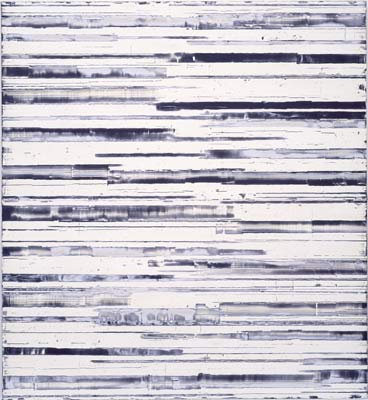Mark Harrington’s East/West at Edward Cella Art + Architecture
Abstract Painter's Work on Display through March 1.

“Harrington’s work belongs to and upholds the history of abstract painting,” writes UC Berkeley Professor Emeritus of Art History Peter Selz, “in which the subject of the painting is the painting itself.” In his essay commissioned for the show, “Intuition and Control,” Selz describes the artist’s work, contextualizes it, and recounts a bit of Harrington’s unusual career. California-born but England-raised from age 14 on, Harrington’s artistic path wound through sculpture, graphic design, stonemasonry, acting, furniture-building, and cinematic art direction. He currently finds an artistic home in two-dimensional painting, examples of which are now on display at Edward Cella Art + Architecture.
What could be the common thread between assembling film backdrops, earning a degree in sculpture, and transforming oneself into a fictional character? Emphasis on visceral visual impact, quite plausibly, and Harrington’s newest pieces certainly possess that. As for his other pursuits, especially working with stone and hammering chairs together, the obvious common requirement is a knack for physical craftsmanship. That’s also on display in these pieces, though the painstaking manual technique of which the 14 works bear subtle marks isn’t quite the same one that erects intimidating walls or attaches legs squarely to tables. These images present faces of unpatterned, vibrating color, created through disciplined construction no doubt, but revealing an improvisational touch.
Though reproductions don’t reveal it, each piece actually is a diptych, two visually and proportionally similar canvasses united to form a single, understatedly bisected image. Behind the canvasses lie PVC reinforcements, giving the paintings an ultra-smooth surface. Across the canvasses stretch bands of monochromatic color created with tools of Harrington’s own invention. These fade in, cut out, and challenge the viewer to determine which layer is which. The enormous “Ishmael” resembles the most absorbing television static ever depicted, while others, like the much smaller “Untitled #342,” employ deep blues without necessarily evoking sky or sea. Physical labors aside, ensuring that a painting represents itself alone may be the hardest part of the job.



